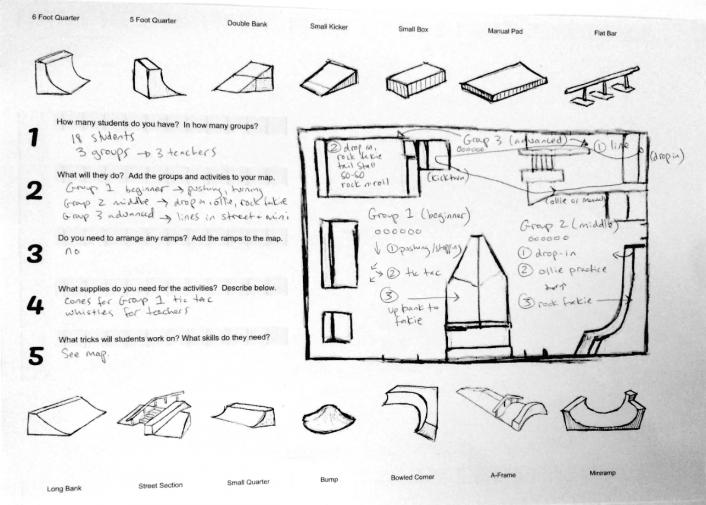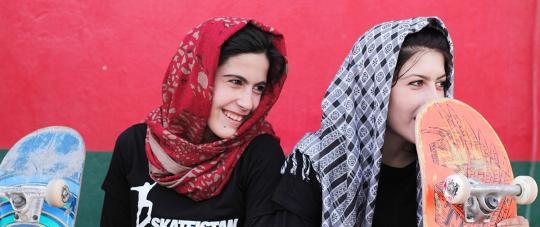Skate
About Skateboarding Programs
There are a lot of different ways you can run skateboarding programs, from loose sessions with skateboards that kids can borrow (loaner-board sessions), to structured skateboarding lessons focusing on life skills. The way you run your skate programs will depend on the aims of your project or organization, who your participants are, and what resources and infrastructure you have available. If you're wondering how to teach skateboarding safely then this is the place to start!
Skateboarding programs usually:
- Run according to a regular schedule
- Provide teachers or volunteers to support participants
- Maintain and provide skate equipment (as needed) for participants to use
- Make sure the skatepark/location is clean
Safety First!
Work with children’s comfort levels:
- Avoid pushing them too hard
- Give positive feedback and praise for effort
- Encourage students to cheer for each other
- Discourage them from laughing when others fall over,
- Avoid yelling at students, even to get their attention (can use a whistle for group management if needed)
Other Safety Tips:
- Provide helmets and pads for students
- Do a regular inventory & maintenance safety check
- Always have enough staff (at least 1 staff/volunteer per 8 students in skatepark)
- Warm-up before and warm-down after (stretching)
- Always have water available for kids
- No food or drinks on the ramps and skateboards
- Keep skateboards and ramps dry (even during rainy season!)
- Train team in Injury/First Aid procedures
For more ideas and best practices, check out the Goodpush Child Protection toolkit.
Rules
Each skate projects should have its own rules. The students, staff and visitors have to act according to those rules. The rules should be adapted to whichever community you are working in. Here’s a PDF example of some typical skatepark rules.
Tip: Have a whiteboard or other signage where you can post information about your programs, including the session times, emergency service numbers, and contact info for people who want to join.
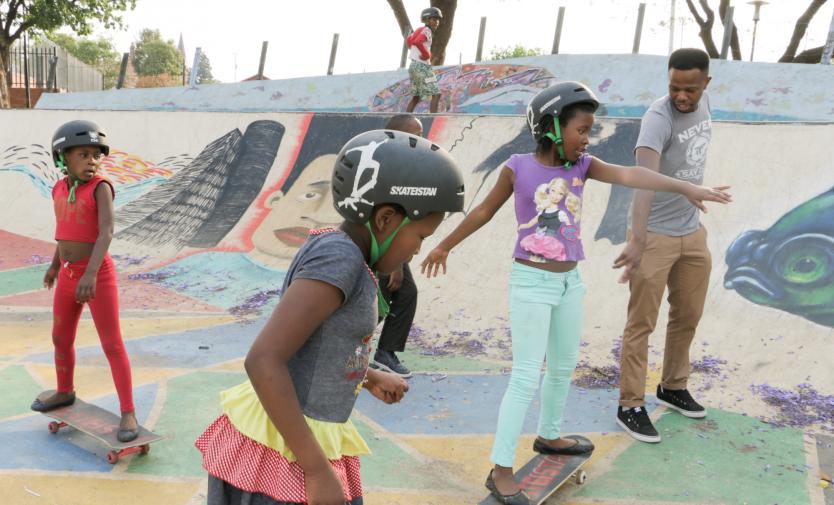
Structuring Skate Classes
Running structured skate sessions can be useful for:
- Organizing large numbers of kids with varying abilities
- Managing limited numbers of boards
- Making sure everyone has a chance to learn
- Building life skills
- Reducing injuries
Remember to have a two-minute huddle with all staff, volunteers and Youth Leaders before each skate session. Use this time to decide how the class will be split into groups after the warm up and what tricks/skills the students will be learning in what group and what area of the park.
This will make the class far less stressful and chaotic to manage, will utilise the capacity you have with the amount of staff in the skatepark, and create a safer and more managed, structured environment for the kids to learn in.
Overview of a typical skate lesson:
- Safety Gear
- Warm up
- Falling Practice
- Stance and Pushing
- Navigation (tic tacs / using the tail)
- Skate games
- Free Skate
- Warm down & reflection
Check out this example for a 1-hour beginner skateboarding lesson. You can adapt this to fit your location and needs.
Always remember – If you are bored then so are they!
Skate Games
Playing games on skateboards make lessons more fun. Games also help participants learn to control their board, balance, and keep an eye out for others around them within the skatepark, which helps reduce crashes and injuries in the long run. Games can help to minimize the chaos during a busy session, for example by having some of the beginners practice on a balance board outside the skatepark.
Tip: Show don’t tell. Act out the game to make sure everyone understands.
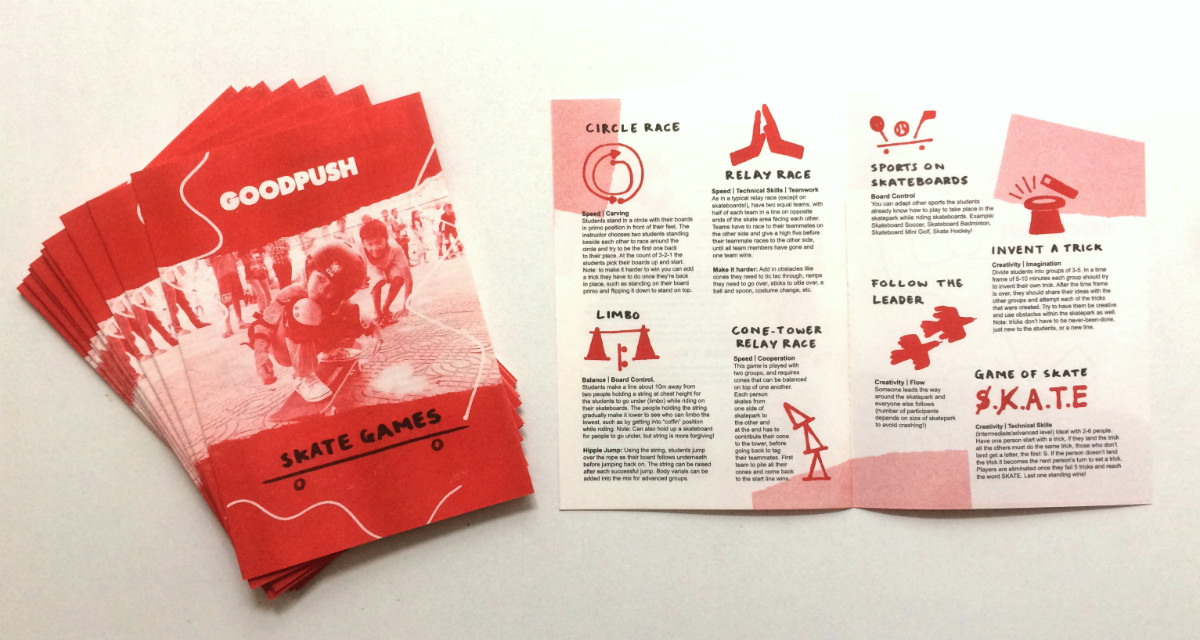
Other benefits of playing skate games include:
- Participants learn and practice new skate skills without consciously thinking about it
- Games help participants to build other (non-skate) skills like cooperation, teamwork and creativity
- They can make even a flat piece of concrete more interesting and challenging to skate
- Many of these games can be played by almost any level of skater, which encourages skaters of different levels to work together
- Games are energizing and easily fill 10-15 minutes of a skate lesson
The Goodpush Skate Games Booklet features 20 game ideas that all involve skateboarding somehow. Click here to see the Skate Games Booklet (PDF) and use it in your next skate lesson!
You can also print it yourself using this high-quality file (PDF). Show us your skate games in action by tagging @thegoodpush in your social media!
Other languages available:
If you'd like to volunteer to translate the Skate Games Booklet into another language, email goodpush(at)skateistan.org!
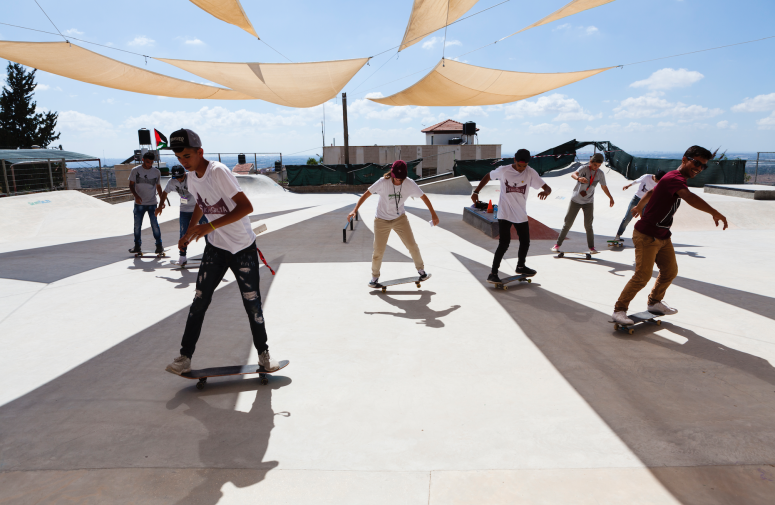
SkateQilya in Palestine show us how a Crabwalking race is done!
Loaner Skateboards
While it can be tempting to give away skateboards, these will very likely wear down over time, get stolen, be left in the rain or not be maintained properly. Most skate projects have a limited amount of equipment to work with and want to make the most their boards.
Tips for “Loaner” skateboards:
- One approach that works well is having boards for children to borrow and bring back when they finish skating.
- Boards can be stored with community centre manager, in a locked box, locked under-ramp storage area, in a shipping container or similar shelter.
- To make sure boards are returned, an honor system can work, but a more secure option is for skaters to leave their mobile phone with a supervisor/volunteer which they only get back when they return the board (an idea from Make Life Skate Life’s Suli Skatepark in Iraq!).
- Have 2 or 3 skaters share one board if there are not enough for everyone.
- Spraypaint boards in bright colours with your organization’s name on them. You can also paint a number on them to keep an inventory and track if any go missing.
- To make sure girls also get a chance to participate, try spraypainting or stenciling some boards with a distinct colour or image to make a few “Girls Only” loaner boards.
Skatepark Maintenance & Storage
Maintenance
Regularly check all the obstacles, pads, helmets, skateboards, and other equipment in the skatepark and make sure they’re not damaged or worn out. If you find anything that is unusable or needs repairs it is crucial to separate them from the rest of the materials in the skatepark and repair or replace them. It’s also worth doing a workshop with participants and volunteers about board maintenance, such as setting up a board, and taking care of it (not getting it wet or letting it launch into walls).
Skatepark tidiness is also important; it will help make your inventory checks run faster and smoother as well making it safer to skate. If the ramps are damaged and you’re unsure of what steps to take to fix them, ask people who have more experience with carpentry and ramp building.
If your skate location has movable objects it’s a good idea to mix up the layout of the ramps every month or so to keep the skatepark from getting old and predictable for the skaters.
Storage
Skateboards and other equipment should be stored in a secure location. Access to the skateboard storage should be given to the as few people as possible. The risk of items going missing goes up as more people have access and there is less clear accountability for the storage space and contents.
It’s useful to do regular inventory checks of how many shoes and skateboards you have in the skatepark. Keep it simple: organize shoes by size, and count skateboards by the number of usable set-ups for lessons. Make sure to keep a document on hand that can be easily updated if you need to use any parts within the storage to replace or fix any boards in the skatepark. This will make it easier to track when you need to get new skateboard parts as you will know exactly what you have at all times.
Choosing a Location for Skate Programs
In case you haven’t found a good location to run your skate programs yet, here are some ideas.
Options:
- Existing skatepark
- Existing flat space where you can bring obstacles
- Building a skatepark
- Check out the Public Skatepark Development Guide and our resources list below
Extra tips:
- Depending on weather, you’ll want to consider indoor vs outdoor/covered options.
- Build obstacles that are fun for all levels and allow progression
- Involve volunteers/staff in building of the skatepark (together with expert builders)
Next Steps
1. If you don't have any rules yet at your skatepark, organize a session together with the kids where you brainstorm rules together and have kids create posters or a painted sign to put up in the space.
2. Using our Skate Session Template, design a 1 hour skate session with 20 kids and 3 staff/volunteers. It can be helpful to draw an outline of your skatepark first. Check out this filled in example below from Skateistan Cambodia.
3. Learn more! Now that you know the basics of running a skateboarding program, check out our new (and free) Goodpush E-Course on Trauma-Informed Programs. It's a great introduction to running safe programs which acknowledge the intricacies of working with vulnerable youth.
4. If you're not tired yet! You can finish with our E-Course on Mental Health and Wellbeing in skateboarding programs. This online module provides an introduction and background to the topics of mental health and youth program design. It was designed specifically with sport for development programs in mind, but can be useful for anyone working with children and young people.
